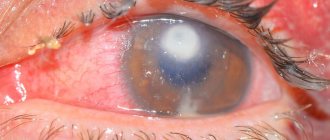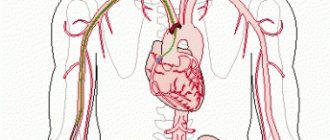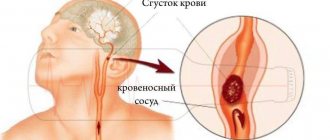VSD and smoking are closely interrelated due to the active influence of nicotine on the development of an attack. Vegetative-vascular dystonia is one of the common diseases of the young age group in developed countries. At the same time, the percentage of smokers is growing, and along with this, the risk of dangerous diseases is growing.
Thyroid and smoking
How does smoking affect blood vessels?
Does smoking affect the liver?
How does smoking affect the heart?
Use search
Are you having any problem? Need more information? Type in the form and press Enter!
Causes of VSD
Many doctors believe that VSD is a consequence of psycho-emotional stress, when general well-being worsens and internal organs stop working correctly. There are many reasons for the appearance of VSD: long-term depression and constant stressful situations, incorrectly calculated physical and emotional stress, sleep problems, reduced immunity, spinal diseases, and a sedentary lifestyle.
Reviews from doctors indicate that several causes intersecting at the same time are sufficient to initiate the outbreak of the disease, thereby comprehensively disrupting autonomic regulation.
One of the sources of VSD is the presence of bad habits in a person’s life – smoking and alcohol abuse. All people know about the dangers of smoking, but not everyone has information about whether you can smoke if you have VSD.
Treatment and prevention of panic attacks
An effective method in treatment is the use of hypnotic techniques, when an attitude is instilled in a person, the causes of such attacks are clarified and they are eliminated. Drug therapy includes taking antidepressants and anti-anxiety medications. Such drugs can quickly relieve the symptoms of a panic attack or ease the course of the process. But drug therapy is used for a short time. It is good to combine several methods for treatment (hypnosis, visiting a psychologist or psychotherapist, medications).
To prevent attacks, be fully prepared - find out as much as possible about your problem. This way you can take a step towards recovery, because you will know the possible causes and main symptoms and how to get rid of them.
Avoid caffeine and quit smoking, as this may trigger another attack.
Learn to control your breathing, perform special breathing exercises. Learn to relax, meditate, spend your leisure time with health benefits, and eat a balanced diet.
VSD is a disease that includes a set of symptoms indicating a malfunction of the vascular system.
In modern medicine, vegetative-vascular dystonia is considered as a combination of various symptoms, and not as a separate disease. The main feature is that its symptoms cause illness throughout the body.
Before diagnosing VSD in a patient, the doctor must rule out other dangerous diseases.
Smoking is especially dangerous for VSD. Why and what this can lead to, we will consider in the article.
A smoker should know that smoking and VSD are incompatible. Nicotine puts a strain on the cardiovascular system, which is already suffering greatly.
Smoking and VSD
If we say that smoking in general is a bad habit and negatively affects a healthy human body, then with VSD this addiction significantly undermines the functioning of the entire body. The symptoms of VSD are directly related to a malfunction of the central nervous system. Against the background of her disorder, various painful phenomena arise: depression, panic attacks, phobic reactions. All this happens due to a reboot of the nervous system. And constant insomnia, headaches and excessive psycho-emotional and physical stress can lead to the development of the apathetic stage of the disease.
Smoking often only worsens the symptoms of VSD. The greatest misconception among smokers is that smoking cigarettes calms the nerves. During times of nervous tension, the number of cigarettes smoked increases, which means that more harmful substances enter the body, which have a negative effect on health.
In a word, smoking and VSD are incompatible. In the presence of such a harmful addiction as smoking, VSD can develop into a severe form with serious and sometimes irreversible consequences.
Many smokers claim that if you quit smoking, VSD will not disappear, which means that smoking does not depend in any way on the number of cigarettes smoked. However, scientists have proven that if a patient quits smoking, the body’s protective functions will be restored over time, return to normal, and the symptoms of VSD will gradually begin to disappear.
How to treat
The simplest, most obvious and effective way is to quit a bad habit. Well, or at least reduce the intake of nicotine into the body.
You can also try to compensate for the symptoms of vegetative-vascular dystonia. Doctors have developed a fairly effective three-stage treatment system for NCD, in which the level of therapy is determined by the severity of symptoms and organic manifestations of pathology.
But you can help yourself: if VSD is a maladaptation of the body’s systems, you can try to adjust the adaptive capabilities:
- Elimination or modification of predisposing, provoking factors (elimination of foci of chronic infection, elimination or reduction of stress, elimination of neurotoxic effects).
- Normalization of sleep/wake patterns.
- Hardening.
- Regular dosed physical activity (it will also provide invaluable support in the process of quitting smoking, stimulating the production of endorphins).
- Breathing exercises to relieve respiratory symptoms.
Take the smoking test
Smoking: habit or disease?
There is a very close relationship between smoking and the course of this disease. First, you should consider the consequences of nicotine and other harmful substances entering the body as a result of smoking several cigarettes.
After smoking just a cigarette, the following negative changes appear:
- the pulse and heartbeat quicken, blood pressure rises, which provokes vascular spasm;
- panic attacks or strong psycho-emotional agitation may occur after smoking;
- after puffing, arrhythmia and dizziness may appear;
- the appearance of headaches due to vascular spasms when smoking.
It is worth noting that smoking two or more cigarettes at a time can only aggravate the above symptoms of VSD.
The presence of the disease and smoking leads to a vicious circle. Smoking over time depletes the nervous system, and this several times increases the manifestation of symptoms of VSD. In turn, constant stress and tension, nervousness and depression even more often push the patient to smoke several cigarettes. Thus, a hopeless vicious circle is formed: smoking worsens the course of VSD, and vascular dystonia itself creates situations that encourage smoking. Each time this snowball grows, and it becomes almost impossible to stop.
Prerequisites for the appearance of dependencies
Anxiety is the main inconvenience of every modern person who is trying, to the best of his ability, to follow progress, strive for self-development and achieve specific, significant results in his career, hobbies and personal life. This is a worthwhile and noble goal. But sooner or later, everyone is faced with what today is called oversaturation of the information space.
The abundance of social networks, marketing, which flows like a fountain into the head and forms a stable inferiority complex - all this leaves a person no chance to decide on the most important priorities in life and leads him into a vicious circle, as in the well-worn saying: “If you chase two hares, you won’t get any.” you'll catch it." In a trap, in an attempt to get out of which and become fully successful, a person gets hooked on psychoactive substances, and if for the majority these are “completely safe” stimulants like caffeine and nicotine, then some people end up smoking weed, using dubious quality “experimental” nootropics .
In other words, people with an already alarming personality radical, in an attempt to overcome characterological problems, become addicted to substances and thereby “rock the boat”, receiving as a makeweight an extremely common and even fashionable symptom today - panic attacks.
Panic attacks are the most common manifestation of vegetative-vascular dystonia and are often described as an unexpectedly sharp manifestation of fear and anxiety, occurring with the presence of vegetative symptoms - dizziness, tachycardia, numbness of the hands, severe sweating and pallor (or, on the contrary, the face turns red). The space around, people and objects in this state are perceived especially acutely, time seems to slow down, and even quiet sounds “resonate in the head.” Also characteristic is a feeling of prostration and deep immersion in thoughts about a traumatic situation, often the presence of hypochondria.
Smoking with VSD: effects on the heart
VSD is dangerous due to the development of many difficult-to-treat cardiovascular diseases. Nicotine primarily affects the blood vessels and muscles leading to the heart. After smoking, a rapid heartbeat causes hypoxia of the heart muscle. This occurs as a result of the fact that the vessels affected by nicotine smoke are not able to provide the oxygen demand of the myocardial muscle increased several times.
The amount of oxygen in the blood decreases due to the appearance of carbon monoxide in the body, which enters along with cigarette smoke when smoking during VSD. As a result of oxygen starvation, the vital resources of the heart gradually begin to deplete, which leads to various diseases of the cardiovascular system.
The most dangerous moment is when the rate of blood clotting increases during smoking with VSD. This can lead to the appearance of blood clots in the heart cavity, the rupture of which threatens a person with myocardial infarction, cerebral stroke, and even possibly pulmonary infarction.
With a high concentration of nicotine in the blood, cholesterol and lipid levels increase when smoking. As a result, atherosclerotic plaques form in the blood, disrupting the normal blood supply to the heart. This leads to heart attacks, coronary artery disease and even death.
It is worth adding that the same process occurs in the vessels of the brain at the time of smoking with VSD. Poor circulation leads to headaches, dizziness, weakness and shortness of breath.
The effect of each cigarette smoked is like a poison that poisons the smoker’s body. The blood vessels of a person suffering from nicotine addiction in combination with VSD are under constant tension. Their constant narrowing leads to poor circulation, rapid heartbeat and increased blood pressure after smoking.
Very often, smoking can cause tachycardia - one of the signs of VSD with nicotine addiction. This disease manifests itself in the form of increased heart rate, which makes it feel like the heart is jumping out of the chest. The dangerous thing is that smokers do not write off this symptom when smoking, but believe that it is just a consequence of emotional stress or experience. As a result, a hospital bed awaits them in the cardiology department. Doctors assure that VSD and smoking eventually lead to a heart attack, various heart diseases and a deterioration in general well-being.
Signs and symptoms
All symptoms of panic attacks are usually divided into typical and atypical signs. The first include manifestations such as cardiovascular symptoms. They require frequent medical attention - tachycardia, disruptions in the normal functioning of the heart, chest pain, hypertensive crisis, rapid heartbeat, breathing and pulse. Another common complaint is suffocation, which is accompanied by a lack of oxygen, sweating, a rush of heat or cold, nausea, dizziness, derealization, and fear of dying.
As for atypical symptoms, these are: convulsive contractions of muscles, upper or lower extremities, disturbances in the normal functioning of vision or hearing, impaired coordination of motor activity, feelings of a “lump in the throat,” fainting, repeated bouts of vomiting. Sometimes at the end of the attack there is involuntary urination.
Signs of an unpleasant illness often resemble various diseases. Signs of such a process progress over time and reach a maximum in a short time. A panic attack differs from somatic illnesses in that it occurs sharply and suddenly. The majority of such processes occur in normal human life during the waking period. If this happens in a dream (which happens very rarely), then the panic attack occurs for a long time and with severe manifestations. On average, an attack lasts about 30 minutes.
A panic attack can only happen once. But even with a single occurrence of such a process, a person subconsciously expects the next attack, which is certainly provoked by an anxious state and depressing expectation, so a vicious circle is formed. Panic attacks may be a consequence of a situation that you think threatens you in some way, or may accompany other disorders (social phobia, depression).
Respiratory disorder
Vegetative-vascular dystonia very often leads to respiratory distress. A smoker feels all the symptoms of the disorder several times more strongly: suffocation, critical lack of air, heavy and labored breathing after smoking. This occurs as a result of the negative effects of nicotine on the respiratory system, or more precisely on the patency of the respiratory tract.
Thus, VSD in combination with smoking can lead to diseases of the bronchial system.
Classification of the disease
There are the following main types of panic attacks:
- those that arise spontaneously, without apparent causes or provoking factors;
- situational attacks - occur when a person experiences certain situations, conditions or circumstances that cause psychotraumatic manifestations for him;
- conditional situational attacks - most often manifest themselves under the influence of certain factors, for example, a chemical or biological stimulus (drinking alcohol, smoking, caffeine, hormonal changes).
There is a hypothesis that a panic attack has occurred to one degree or another in the life of every person after a certain amount of stress as a natural reaction. Attacks can be accompanied by various somatic pathologies, mental disorders, and depression. With panic attacks, each person who suffers from them experiences varying degrees of symptom intensity. One person may feel a little anxious, while another may feel fear or even terror.
Smoking and psychology
Constant stress and depression, apathy and anxiety force the smoker to smoke one cigarette after another to obtain the illusion of “salvation” and “calm.” Smoking creates a protective screen for the smoker, behind which they hide from the outside world and other troubles during VSD. But this is only a psychological deception, which subsequently leads to the transition of VSD to a severe form, and the passion for smoking to nicotine addiction.
From the above, we can conclude that stress gives rise to the desire to smoke, and smoking itself with VSD only further destroys the body.
Should you quit smoking cigarettes?
If a smoker wants to lead a normal lifestyle again, do his favorite things and get rid of the symptoms of VSD, then the first thing he should do is quit smoking and start following several rules:
- learn how to plan your daily workload correctly. Evenly distribute mental and physical work;
- don't forget to get enough sleep. Since good sleep in a ventilated room and on a comfortable bed brings the body into a stable state;
- follow a diet for VSD. Eat foods rich in vitamins and nutrients.
VSD is an unpleasant disease, but with some effort you can reduce the appearance of symptoms of the disease to a minimum, thereby significantly improving your condition.











